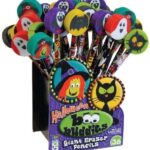
Sign in
Don't have an account with us? Sign up using the form below and get some free bonuses!

I recently had the pleasure of interviewing Dr. Vanessa Lapointe, parenting expert and registered psychologist, about the topic of separation anxiety. In the first part of our interview, we discuss the independent child -- where true independence comes from and how we can best nurture it.
Dr. Vanessa has been supporting families and children for more than fifteen years. She’s the author of Discipline without Damage: How to get your kids to behave without messing them up and Parenting Right From The Start: Laying a Healthy Foundation in the Baby and Toddler years (afflinks).
Make sure to watch the full interview about separation anxiety and the independent child here:
Hello there. I am Sarah with Dandelion Seeds Positive Parenting, and today I am so excited to talk to my friend, who is -- I don't think it's too much of a stretch to say -- a golden goddess of good parenting.
I am such a fan of this lady and I want you to know her, too.
Dr. Vanessa Lapointe, thank you so much for talking with me today.
Thank you for having me on. This is a really, really cool thing to be doing with you.
I'm so excited. Well, today's topic is separation anxiety in the context of healthy attachment and growing an independent child.
Diving right into this topic, let's dispel one of the biggest myths that I have heard in all of my parenting circles, which is "An independent child should start showing this independence basically from the time we first hold them. A healthy baby, a healthy young child, is the one who doesn't really need his or her big person in their life all that much."
Can you talk a little bit about the validity of that and what healthy secure attachment actually is?

Yeah. So, that idea of having an independent child -- that seems to mean you're winning, and you've nailed this parenting thing.
If your kid's independence comes from a surface look at who children are, and what it is that they need, and that surface look is that this kid is functioning independently, which then we say is functioning -- .well, that's really convenient.
It means I don't have to worry that they're not on track. I don't have to worry that I've done anything wrong. I just get to be like, "Cool. Look at my independent child."
The problem is that independence is not the natural state of the human child.
The human child is born into the world very deeply dependent -- so deeply dependent that from an intuitive space and place, they know from the moment they arrive and get their little eyes open for the first time, and they start blearily looking around (because they actually can't see very well), they know to find your eyes.
Because they know already, from moments old, you are their best bet. And without you, they're hooped.
So kids know. They come out looking for us because they know that dependence is the natural stance of the human child.
We have a really curious pop culture around parenting that has sprung up touting the virtues of the independent child because it's kind of convenient for the grown-ups, but it isn't actually the need of the child.
And when we can allow our children to deeply depend on us, to really lean into the embrace of our care, literally and figuratively, then what happens is that -- out of the gift of deep dependence -- emerges true independence. - Dr. Vanessa Lapointe on the independent child
I have a child psychology clinic where I have about 10 colleagues that work with me. Our practice is full of 15-, 16-, 17-year-old young people whose parents come in and say all the time,"My kid doesn't care about school. I can't get them to care about it. My kid doesn't care about our family. My kid doesn't care about helping out. My kid doesn't care about following the rules."
I always know beyond a shadow of a doubt that that apparent lack of caring began when the child was forced into independence before the heart and the soul of the child were actually developmentally ready for that.
And so when we give them the opportunity to lean in, then what happens, it's like this potentiality is building, building, building, building, building, and they emerge, right?
And we all know when it's going exquisitely well, you'll have a two-year-old in front of you and you'll go into you know, swoop and scoop them up and carry them somewhere and they will plant their hands on their hips and get really indignant with you and they'll say to you and their toddler big voice, "ME DO SELF!"
And you're like, that's right. You're emerging. So that's what it is.
We want them to be deeply dependent because that's how you get to true independence.
When you force the facade, the behavioral facade, of independence too early in life, you actually perpetually render the child immature. - Dr. Vanessa Lapointe on the independent child
I love everything you just said because it goes directly against so many of the lies that we are told as parents. I know how many times I was told, "What are you doing picking up that baby? She needs to learn to self-soothe!"
And lo and behold, we learned that developmentally, self-soothing is one of the biggest myths on the planet.
That's right. Yeah.
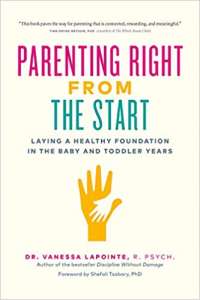
I love the toddler reference you made because we do start to hear these big voices emerge in them. All of a sudden, there is that magical moment where they say or do something and it might not be "I'm ready for Grandma to take me off to the park without you, Mama or Daddy or whoever," but it might be, you know, "I am going to be the one to try to cut my own uncuttable peas on my plate." I am going to the death over these peas, and okay.
So I love that you referenced toddlers because that is oftentimes the first time we see the emergence of self.
That's right.
And in the process of individuation, which is what we all want for our children, we just want to trust in nature's timeline, rather than the world's forced timeline.
And in that process of individuation, it's somewhere around 24 months of age where the human child realizes for the very first time that they are in fact a separate being from you. Up to that point, they think that you and them, as the primary attachment figure, are one in the same.
And so it also is at that point where you'll see the first spike in the general population of kids displaying this separation anxiety. And how brilliant is that?
Might you be a little freaked out if like your entire time on this planet you actually thought you were one in the same as another person, and then you've realized you're not. You're like, "Hold on a second. I'm really struggling with this here."
It’s a beautiful thing for us to honor the truth of who our children are and to really come alongside child development rather than fight against it. - Dr. Vanessa Lapointe on the independent child
Yeah, for sure. Let's talk a little bit about what we as parents and caregivers can do to let our children grow naturally, as you mentioned, and foster a sense of security, rather than separation anxiety and all of the ways that insecurity can manifest for the child who has been forced to do things independently too soon. What really grows an independent child?
Yeah. I love this quote from Kitty France, which is, "You are not managing an inconvenience. You are raising a human being."
It's the idea that we, as parents, are going to be swimming upstream a little
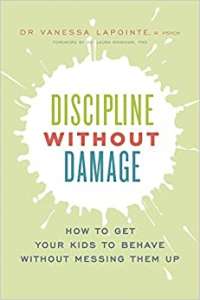
bit because, even as you were alluding to earlier, we have a lot of voices in our ears, you know about how we're supposed to do this and there can be a lot of pressure.
I tell parents all the time -- listen, I was like a graduate student in the field of child development and psychology for 13 years and had a baby and had all those same voices in my ears, and actually questioned whether I was on the right path or not.
I found it really challenging to hang on to my inner wisdom and all of my acquired knowledge about all of that because the pressure of swimming upstream is so significant.
So when we're working to come alongside children, especially children for whom there's maybe been a few bubbles along the way as far as allowing that deep lean in and the deep dependence, understand that first and foremost --
You are here in the service of your child. You are not here in the service of the world. - Dr. Vanessa Lapointe on the independent child
And what a wonderful thing for your own growth as a human being, and for sure for the growth of your child, for you to step in to the greatness of who you are, and stand solid and certain not against the world, because if you go against the world, you will feel like you're drinking poison all the time.
So you step in not against the world, but rather, for your child; for yourself. And when you can really get that that's your job as a parent, to step in with swagger, with conviction, with power, with grace, and you determine the path that you shall chart for your child to be able to move through development without any unnecessary obstacles in the way.
And then you get busy with figuring out how you can fill up their connection cups, as sort of just a way of going about your regular day.
And in the separations that cannot be avoided, how do you be with your child when you cannot be with your child?
So it's about front loading and then also coming alongside our kids to be with them even while we're apart.
I love all of that. And what you just said, in a nutshell for me, is it's okay, we have permission to emotionally and physically show up for our children when they need us; we don't "make" the independent child by forcing it.
This isn't some rule book that says you need to step away and let your kids figure it out because that's what independence comes from.
You have turned that around 180 degrees and you have said show up, be there, connect -- and that's part of that bucket filling process that enables the future separations, doesn't it?
Yeah, and not only do we have permission, but we be writing our own rulebook.
Yes. Because I'll tell you what, I wrote a rule book for my first son, figuratively speaking, and it was a completely different rule book for my second son, because they're their own unique little people who needed very different environments and very different kinds of ways of going and being and doing.
And so, it's sort of like, I always find I'm kind of stepping in with this like but it's kind of that like, "I'm going to tell you how this is going to go because I'm this child's mother or father and ain't nobody know my kid like I know my kid, so I'm going to let you know how this is going to go."
It's that inner confidence that can be such a challenge.
Yeah, absolutely. I love the idea of writing your own book.
That really is such a different mindset from, "Hey, what do I do? Tell me world, tell me society," because society doesn't know your kid at all. You do.
That's right. Love that.
*
You may also like this information-packed mini-course: Setting and Enforcing Healthy Boundaries with Kids
Make sure to watch the full interview about separation anxiety and the independent child here:
In Part 2 of this interview excerpt, Sarah at Dandelion Seeds Positive Parenting discusses with Dr. Laura Markham of Aha! Parenting how to help an older sibling adjust to a new baby in the home. (Part 1 is here if you missed it.)
If you’d like to see the full interview, which covers the lifespan of nurturing the relationship through childhood, from introducing the new baby and on through the teenage years, you can view it here.
Dr. Laura Markham is the best-selling author of three books, including “Peaceful Parent, Happy Kids” and its associated workbook, and our topic for today, “Peaceful Parent, Happy Siblings,”
Now, let's say a couple of months have gone by and now older sibling is thinking, "The new baby is really not going anywhere and now I'm starting to feel the effects of -- yeah, maybe mommy and daddy
Click to learn more. Afflinks.
have been doing a really good job of filling my bucket, but I still kind of wish it were just me sometimes. And I still wish...you know, I'm missing the good old days, back when I was the little kid, back when I was the new baby."
Sometimes, their way to communicate that comes out as tricky behavior.
Now, we are still more than likely sleep-deprived. We are still more than likely figuring out, ourselves, what it means to have more than one child, and more than one schedule,
Click to learn more
and all of the things that go along with having more than one child in the house.
Many parents at this point in their exhaustion, in their lack of emotional resources, sometimes turn to some more traditional disciplinary methods.
"You know what? I can't deal with your tantrum right now -- time out," or "I don't have the resources myself to know how to handle you. So I'm going to just separate more."
Can you talk a little bit about the impact of that and what we can do instead, from a brain science perspective, to prepare to foster that connection with a new baby, to decrease that sibling rivalry, and to set us back on a healthier better course as a family?
Well, we know that behavior is driven by needs and emotions, right?
So, if our child is acting out, there's something behind that, as you've just said. It's the child realizing that this is not going to change. This new baby is here to stay.
At that point, when the child begins to act out, parents often are just frustrated with a child and they also, I've noticed -- moms, especially -- often feel a little defensive because the child is actually grieving.
And they are like, "I did not ruin your life," but actually the child feels like their life just got ruined.
This isn't a permanent condition. But as with all grief, you have to go through it. You can't go around it.
So I think we, as parents, have to acknowledge that our older child will go through some grief. - Dr. Laura Markham on helping an older child adjust to a new baby in the home
Parents often say, "Oh no, my child loves the new baby."
Of course they love the new baby. That's not a problem. I mean, maybe they do. Let's hope they do. If so, you've done a great job, but that doesn't mean they aren't grieving for what they lost, right?
They can love the new baby and still feel grief. That's sort of confusing if you're three or four, or two or six. You still could feel a lot of confusion over it. You don't want to resent the baby and maybe you love the baby. But you also really wish things were the way they used to be.

So we have to acknowledge that our children will feel grief. And that grief is okay to feel. Grief has a few stages, as we know. One of those stages is anger. One is bargaining, right?
So what happens with bargaining? "We can send the new baby back, right?"
[Anger about the new baby] might be directed at us. And most of us, if the older child directs anger at the baby, we flip out. We have to protect our newborn or our 2 month old. We just flip. But of course we protect the baby.
And we know if our child is having a hard time, we don't leave our child. You know, one mom told me that her three-year-old -- she had put the nine-month-old strapped into a baby seat. And she was taking a shower.
She put him right outside the shower, and the three-year-old was playing with his Legos. The three-year-old came over. He was being potty trained, and he peed all over his brother -- which is so hysterical -- it's like marking territory, right?
And of course, we're just beside ourselves with rage.
If you know your kid is that angry, you don't just leave. I know it's hard. You want to shower, but you don't just leave your your nine-month-old strapped into a seat, because the three-year-old could have done something worse, you know. You don't know what your three-year-old could do, and he doesn't understand how serious it is.
We have to be aware. We're the grown-ups. We have to be aware that they're going to have some big feelings. And if we give them a constructive way to work through their emotions, then they're unlikely to take them out on the baby. - Dr. Laura Markham on adjusting to the new baby
When you notice your child having a hard time, immediately start using what I would call preventive maintenance, techniques, which one should use anyway.
You don't just change your oil in your car once it starts sputtering. Hopefully, you change the oil at the right mileage, right? So that is the way preventive maintenance works.
So what would preventive maintenance be for your child?
Number one: empathy. Whatever your child is feeling is allowed.
If your child says, "I hate the new baby," even if they're just muttering it as they, you know, as you have to stop playing trucks with them to go and get the baby, who's started to cry.
If they say it when you come back, you say "I heard you say you hate the new baby."
Don't let your buns be pushed by the word "hate."
"You know, I think sometimes It must really bother you to have the new baby in our house. It must be so hard to have me leave when you want me to stay and play trucks. It must be so hard to wait when my hands are busy with the baby and you want me to help you. It must be hard." So you're acknowledging his feelings.
You're not putting ideas in his head.
You know, every child is going to have some of these negative feelings. They have to be allowed to tell you. - Dr. Laura Markham on helping older siblings adjust to a new baby
The interesting thing I've noticed, or I've heard from parents, is once they open that door, they get an earful. Once they make it okay for them. If they say, "You can always tell me how you feel, and I will always listen; I will always try to help," and you give them a hug once you say that, and they have that permission.
They'll tell you, "I hate you! You should never have had this baby."
Parents get a little fed up with it sometimes, but here's the thing. If they respond with love and patience and saying -- don't respond to the hate part -- you know, that's just your child trying to push your buttons, because that's their anger again, coming from the grief.
Just say, "It must be hard sometimes, and you've got support."
Whenever we're asking our child to rise to a level, to exhibit behavior that's hard for them, it helps if we give them the support to do that. And in this case, the support is our empathy. - Dr. Laura Markham on helping older siblings adjust to a new baby
So that's #1 in preventive maintenance: empathy.
The second thing in preventive maintenance would be one-on-one time. There has to be time without the baby. You have to spend time with that child without the baby.
And if you've got a baby who wakes it's up every 10 minutes and you have to hold them through their naps because they won't sleep -- I mean, there are those babies, right? You're going to have to figure something else out with your partner, with a sitter, with whoever you've got, so that you can spend some one-on-one time with your older child.
They need it. And they need you to not be checking on the baby during that time. It's got to be -- you're there for them 100%, pouring your love into them.

Another thing that is really helpful is roughhousing. And roughhousing, there's nothing rough about it. It is just tossing your child around to get them laughing. You can play specific games. Whatever gets them laughing is good. We already talked about why that's important.
Roughhousing changes their body chemistry in ways that make them more open to your influence and more connected to you, and happier because it sort of drains off all the stress hormones. - Dr. Laura Markham on helping an older sibling adjust to a new baby
I call that emptying out the top layer of stress in the emotional backpack. Once they don't have that layer of stress, they're less stressed. They're less tightly wound. They're more relaxed, more cooperative, more emotionally generous toward the new baby, right?
Another thing that really helps the older child is routines. I think we're on number four here. Kids need to know what to expect. It makes them feel more secure. So that's important.
And you know, yes, you have a new baby and sometimes babies don't yet have word from you. They haven't really gotten it through there in into their mind that "Oh, there's a routine here," but your older child does need a routine.
So they need to have you, as much as possible, protect their routine. So, It again keeps their stress level down.
Then, the final thing I talked about empathy allowing all emotions. I would take it a step further to welcoming all emotions, and that includes the negative ones.
If your child needs to cry, welcome those tears. - Dr. Laura Markham on helping an older sibling adjust to a new baby
That's what happens when we grieve, is we need to cry. Often, it will start off his anger. So don't get hooked on the anger.
"I hate you. I want a new mommy." Just take that deep breath. Remind yourself, "They're having a hard time." They're telling you in the best way they can that they're stressed.
Say, "Oh, you're having such a hard time. You want me to see how hard it is and how mad you are at me? I'm right here. You can tell me."
And as you make it safe by accepting the feelings, the anger, which is just a defense against those more vulnerable feelings of grief underneath, or fear that you love the new baby more, those feelings start to come. The anger is no longer necessary once they allow those feelings to come to the surface.
So, letting your child cry, being there for them, you will find that afterwards some people tell me it's like he's a different kid, you know, he's he's back to his old happy self because he was able to move through that backlog of stressful emotions.
Absolutely, and you touched on so many important points there. Some that I really appreciate are that you talked about the grief and anger and all the feelings that need to come out.
Most little kids, of course, don't have the executive functioning skills to put those feelings into words. So it doesn't matter how many times an adult says, "Use your words." What they're doing is using their bodies to get those big feelings out.
Behaviors, in these cases, will oftentimes take the place of the words that they don't have in the moment -- to express whatever it is they're doing to process the existence of this new baby.
I love how your approach is empathy based. It's allowing the feelings to process fully through completion. Not just putting a Band-Aid on a feeling and saying, "You know, you seem really angry. Let's go play with the truck."
You're really addressing the feelings. You're naming the feelings. You're giving your older child some of the emotional tools they need to create some really positive brain circuitry: naming feelings, healthy emotional management, emotional regulation, all these things that we read separate articles about, you're living in action as you interact with your child and the new baby. - Sarah R. Moore
Really helpful.
And you know, you can even use books. You mentioned books before. You can make a book before the baby's born about what it's going to be like. But you can also make a book after if the child is having a hard time with the baby.
You know, "Brothers are forever. Sometimes, Mika was angry at his little brother. Sometimes he wished that he could have his trucks all to himself and didn't have to share them..."
And this would be obviously when the baby's a little older. We're moving into the future.
After a year or something, two years even, and the older child is having such a hard time -- continuing to have a hard time with [the baby]. If you make a book like that, that explains it to them and gives them a happy ending -- that even though sometimes they had a hard time, they they always had fun together. They loved each other and had fun together.
And you know, you make sure you show the child being able to go to the parent and say, "I'm having a hard time," and the parents help, so you can give the child a positive view of what's happening, with a happy ending.
You were talking about giving them skills to process their emotions -- absolutely. But it also helps to give them a belief system or framework about it -- because the belief system determines the thoughts we have.
If the belief system is, "My life got ruined by this interloper," that's not going to give them the thoughts that we want them to have. If the belief system is "Yeah, sometimes we can have differences with the people we love.
As my son said when he was little, he was playing with his trains. He had one of them cut the other one off at the pass and the other, than the one that was cut off, said, "I am mad at you."
He was like, "Gordon, I am so mad at you." And the other one said, "That's okay, Thomas, you can be mad at someone and still love them."
Clearly he had heard that somewhere, you know? And so his framework was, this is part of relationships. You can express it and work it through.
I love that. And I think I need a set of trains to keep in my pocket, just so that when I have those moments, I can remember to have those discussions. [laughter]
*
Stay tuned for the next section of the interview, where Dr. Laura Markham talks about nurturing the sibling bond as the siblings get older.
In the meantime, make sure to check out our short but information-packed parenting courses. and sign up for Dr. Laura's peaceful parenting course while registration remains open
Dr. Laura Markham is the founder of AhaParenting.com and author of Peaceful Parent, Happy Kids, Peaceful Parent, Happy Siblings and her latest book, the Peaceful Parent, Happy Kids Workbook.
In a recent interview, I spoke with Dr. Jamie Chaves and Dr. Ashley Taylor about their new book, The Why Behind Classroom Behaviors (afflink). In it, they share their wisdom about everything from the sticker chart to mirror neurons -- and guide teachers (and parents acting as teachers) toward the most beneficial learning environment for their students.
Below is an excerpt where we discuss the sticker chart, specifically. I encourage you to watch the full interview here:
Let's talk about behavior a little bit.
I grew up in the age of the sticker chart, gold stars, and those stoplight cards where if somebody wasn't behaving appropriately, they got a red light for
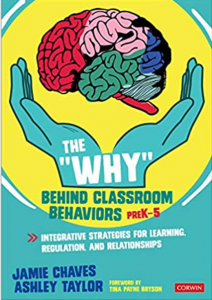
the day. A certain number of red lights across the week meant you don't want to be that child at the end of the week.
Is this really the right way to be leading a classroom these days? If not, what is?
In the book, we focus a lot on reframing behavior plans and talking about the different types of sort of behavior modification.
We really don't recommend any sort of public shaming blaming or having other students see if a child is struggling. That's not an effective way to to teach and to support students
We do talk a little bit about how some students can -- I have worked with a lot of students who actually do respond well to earning rewards if it's done in the right way. But, that means that they already have to have a certain level of regulation and a certain skill set in order for that to be effective.
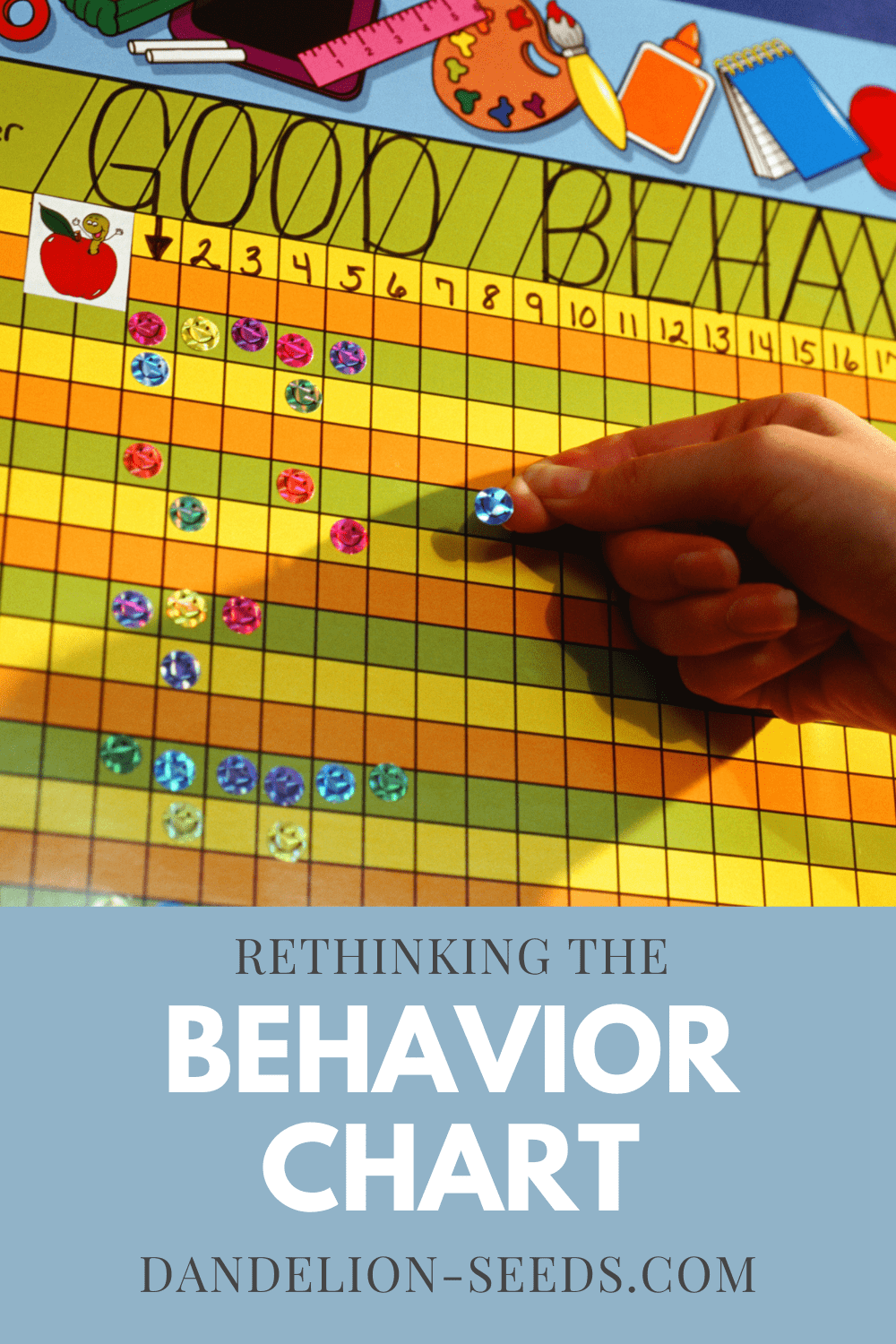
If they don't have that regulation and there are certain skills that they're still working on developing, then the behavior chart and the sticker chart and their rewards can actually do more harm than good.
We talk about an alternative to that. Piggybacking off of what Jamie was talking about with helping to identify the expectation gap is one way to reframe this. Really understanding and identifying what are the expectations of the classroom?
The gap between the child’s abilities and the expectations in the classroom is likely what's causing the behavioral problems that we're seeing.
So, we want to support the student and the teacher in being able to close that gap. The end goal is not necessarily to change the destination, right? You still want the child to be able to meet their goals.
So we're still going to have the expectations. We're just going to lower them and build the child's skills so that they can build the skills and in a space that feels safe and they can feel successful.
Then, as time goes on in their building the skills, you can increase the expectations.
That's that scaffolding that we've been talking about that looks at both of those pieces that can really help the success of both the student and the teacher. You don't need any sort of rewards [or sticker chart] for that.
...Often the kids who are showing disruptive behaviors are the ones who are identified, but there are also students who withdraw or shut down or look bored or tired or sad, and those are also the students who are needing support they're not in a state of regulation.
So it's important to identify those students, and help support them. Realizing what are their expectations and what are their skills [is critical] because they are going into what we call the blue zone.
They're dropping their state of arousal and that's a way of communicating, “This is really hard and I'm shutting myself down.”
With typical behavior plans [and a sticker chart], if you are just targeting that behavior, you're also eliminating the form of communication between you and the child. If you're telling the child, “Don't communicate with me through your body or nonverbal cues,” or whatever language they're able to give you in that moment, that's not a part of a relationship.
And then you're left with nothing; and then you don't know what's going on because you told them that you can't do these things to communicate with me.
Otherwise, I'm going to move you on your sticker chart and then you're both like, "Well, now what’s left?"
So we really do want to start with understanding the “why” behind these behaviors so that we can support them from the bottom up.
That makes so much sense.
It really seems like so many of these behavior cards and the sticker chart, as you mentioned, are the antithesis of co-regulation.
It's "Here's my quick fix and now I'm done," and we want to empower teachers to really have that relationship that you just described where we teach through connection. We empower through connection, and we guide children to be intrinsically motivated to succeed, rather than wondering how many gold stars they can have lined up on the wall by the end of the year.
It's not about the gold star count.
It's about what they have actually learned, not only academically, but also about themselves, so that we can grow from a social-emotional perspective and be all the more prepared for class next year -- as a brighter, stronger, emotionally healthier, and more whole student than when they were younger.
*
If you're homeschooling, check out this short but information-packed course about how to make it easier this year (for you AND your child).
Below is Part 3 from my recent interview with Dr. Tina Payne-Bryson about her incredible new book, The Bottom Line for Baby. In this segment, she talks about the myth of self-soothing -- and how co-regulation is key to helping nurture our children's developing brains.
If you missed Part 1 or Part 2, you can catch up here.
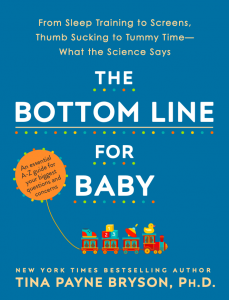
You have given me goosebumps no fewer than 15 times as you're talking about all of these wonderful things that resonate so strongly with me. I'm sure they will with many, many parents who will be watching this.
You did touch on something that I would love to explore a little bit more. You talked about co-regulation versus self-soothing.
Self-soothing is certainly one of the myths that has perpetuated our society globally for more years than it should have at this point.
Can you talk a little bit about that? And what we should be doing instead?

Yeah, I love that. You know, it's funny. We use this term self-soothing and we all have different preferences about how we handle our own personal distress.
When something is upsetting to me -- when I'm anxious, when I'm angry, when I'm fearful, when I'm sad or disappointed -- I might want to be alone for a little while, but what I need most is to be connected to people. So the whole idea of self-soothing...even when I'm by myself, I'm with a self that has internalized all these relational experiences.
I can hear my mom's voice saying, "Just breathe, baby."
I can hear my husband saying, "I'm here if you need me." You know, all of those things. There is no "self."
We can get our super philosophical -- but we are held captive to one another's nervous systems.
I mean, if I go to take a drink -- I lift my sparkling water to take a drink and you're watching me, Sarah -- your mirror neurons are firing as if you were taking a drink as well.
So the whole idea of a separate self is kind of a silly idea, in one way, because the way our brains and our personalities and our souls and our spirits have developed have been in the context of relationship.
So I'm going to start with that [as it relates to co-regulation].
It's really, really ridiculous when we think about asking a baby with a super immature nervous system to self-soothe. - Tina Payne Bryson
It's such a ridiculous idea from a brain perspective and from a development perspective.
And when I talked about the idea of co-regulation -- what I mean by that is when the other person is falling apart, obviously, this could be your spouse or your sister or something too -- but we'll talk about [co-regulation] in terms of children.
Your child is having a tantrum. Or they're freaking out about something, or they're complaining about something and making a big deal about something you think is ridiculous; all of those moments are opportunities for you to build your child's brain through co-regulation.
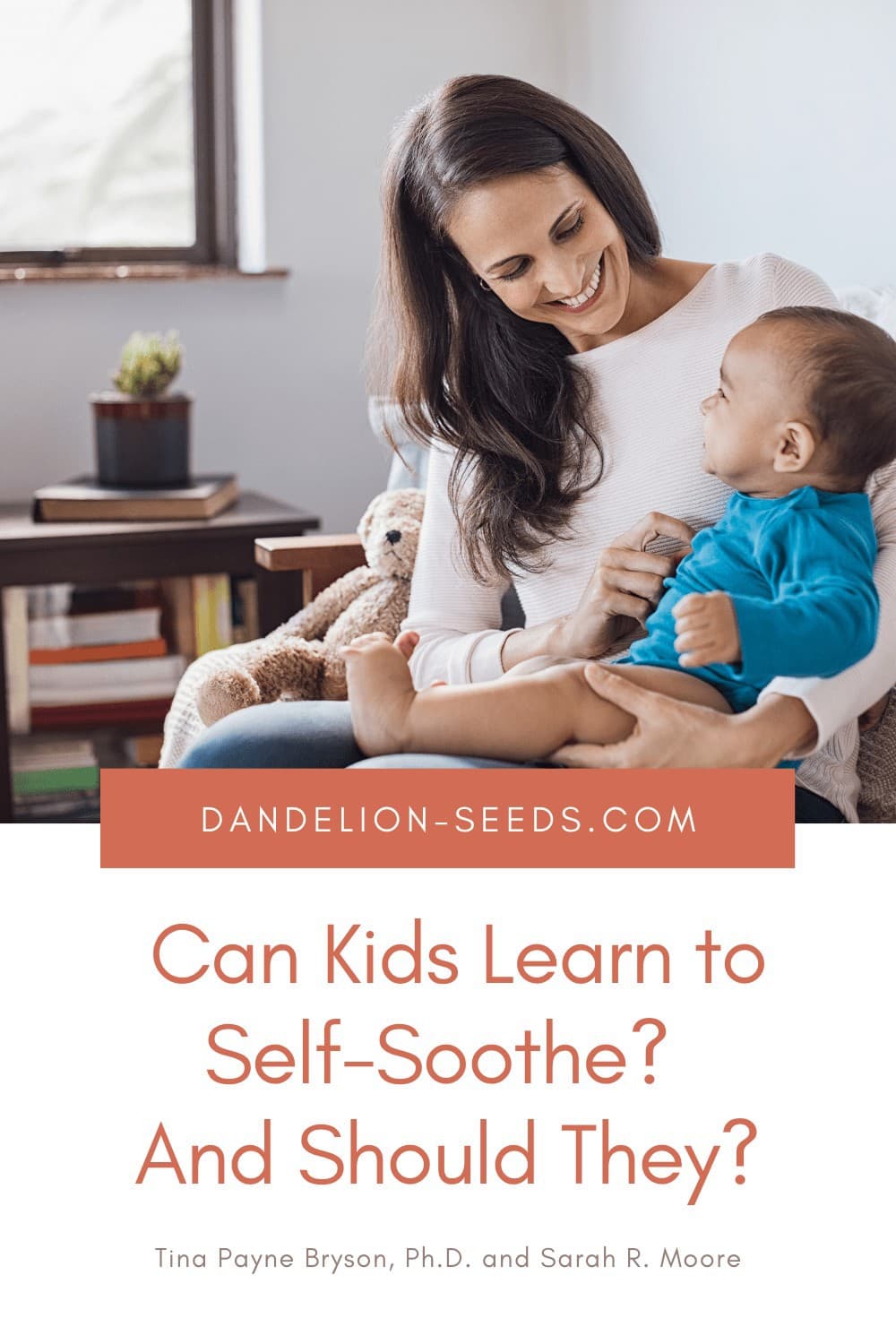
Co-regulation looks like this: my kid's falling apart. They're super angry or they're super anxious, and I show up in that moment with empathy and also boundaries. We can talk about that, too.
I say, "You're so upset." "You're so angry" or "You're afraid." "I'm right here with you. How can I help? How can I comfort you? That's the Seen and Soothed part of the four Ss.
So my son's in the tub. He's upset about bath time being over. He's overtired and I say, "Hey, it's time to get out" and he says, "I'm not getting out."
He's about four at the time.
He says, "I'm not getting out. This isn't even a bathtub. So you can't make me get out of it."
He's just not even being, you know, I don't even know what he's saying, but I don't know how to argue with that.
Some of the biggest questions I get when I talk about soothing our children, and co-regulation with our children, are these:
Here's why it's not.
In that moment. I say to him, "It's time to get out. You can either get out or I will help you get out." I set a boundary, and boundaries help kids feel safe.
So, this is not at all permissiveness.
And by the way, the whole point of discipline is to teach and build skills so that children become self-disciplined.
The way they learn the most -- the time they're most receptive to learning -- is when they are regulated. - Tina Payne Bryson
So in the name of discipline, and by that, I mean teaching, what I need to do, #1, is to get my kid regulated so that he can listen and be open and receptive to addressing the behavior.
The quickest way and the best way to get your kid to listen and be receptive and to be an effective disciplinarian is to get them regulated first.
So in this moment, I say to my little guy who just walked by, who's 14 tomorrow and at least six inches taller than I am -- and I have permission to tell this story -- is I say, "It's time to get out. Or you can get out."
And he says, "I'm not getting out."
So, I say as gently as I can, "I will lift you out of the tub."
So I'm predictable.
I tell him what's happening as I'm lifting him out, and he is screaming and kicking and losing his mind.
I say, "You're so mad that you have to get out. You were having fun and you're really mad you have to get out of the tub. Is that right?"
He's screaming and yelling. He's not even really listening to me.
But he's hearing the empathy and my voice, he's feeling the calm I have in my body, because I have to make sure I get centered. - Tina Payne Bryson
[For co-regulation], we have to make sure we're calm first. If we're not, we need to not touch our children's bodies or open our mouths.
We need to say, "I need a minute to calm down" and to regulate ourselves first, because if we want to be the haven in the storm, we can't be the storm. So we have to calm our internal storm first.
As I'm lifting him out, I'm saying, "You're so mad bath time is over."
I wrap the towel around him and I say, "You can cry if you need to cry. It's okay to have big feelings and be upset. I'm right here with you."
So, basically I'm giving him the opposite message of what we do a lot in our culture, which is to say, "You go calm down and when you're ready to be nice, I will be in relationship with you." - Tina Payne Bryson
I want my kids to know from repeated experience that at their worst, that is when they need me the most. And I will be there for them at their worst.
That's what I want in my relationships.
I want my husband to say, "At your worst, I will still show up for you."
That's what we all need. In that moment, my son is crying I'm saying "no" to a behavior. "You can't stay in the bathtub." But I'm saying "yes" to whatever you feel and however you're going to express it.
And I can handle your big feelings. I'm going to help you get regulated again. I'm going to co-regulate with you. Then, you're going to learn that you can handle your big feelings. And, you're going to learn how to calm your own nervous system by reaching out to someone else, or if you're alone, how to do it.
And here's why. Here's the science. Just like muscles, if I lift weights over and over, if I do reps, my muscles get stronger. That's how the brain works when it comes to regulation.
So what happens, is if we give our kids multiple repeated experiences of going from a falling apart, dysregulated state back into a regulated, calm receptive "Yes Brain" state, then their brain learns how to do it for themselves.
Co-regulation is what teaches kids how to self-regulate. - Tina Payne Bryson
We cannot spoil our kids with too much attention, too much affection, too much co-regulation, too much love.
What gets in the way is if we don't have good boundaries.
I would say that firm boundaries, high expectations that we clearly communicate to our kids -- and there are 60 years of research that support this -- that having firm and good boundaries and expectations, and being completely loving and present and nurturing and comforting should go together.
If you're just about boundaries and expectations, and rules and discipline, they're not going to be as receptive to learning.
The way we get them to embrace those things and learn how to say "no" and how to put their brakes on, is by having them in receptive states that come from those connections and that co-regulation.
Stay tuned for our next segment, where Tina Payne Bryson talks about the scientific support for gentle parenting.
Additional recommended reading by Tina Payne Bryson, Ph.D. and Daniel J. Siegel, M.D.:

In this interview excerpt, Sarah at Dandelion Seeds Positive Parenting discusses with Dr. Laura Markham of Aha! Parenting how to create a strong sibling bond -- even before the new baby arrives, and in the early days after introducing baby at home.
If you'd like to see the full interview, which covers the lifespan of nurturing the sibling bond through childhood, you can view it here.
Hello!
I'm Sarah from Dandelion Seeds Positive Parenting,
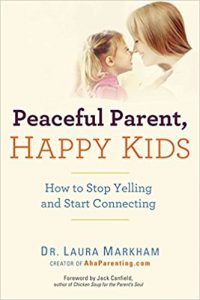
and today I have the incredible privilege of speaking with Dr. Laura Markham of Aha! Parenting about the sibling bond. She is the best-selling author of three books, including "Peaceful Parent, Happy Kids" and its associated workbook, and our topic for today, "Peaceful Parent, Happy Siblings," which I absolutely love when it comes to the relationship that we're trying to foster among the children in our homes.
Dr. Laura, thank you so much for being here and for sharing your wisdom about the sibling bond with us.
My pleasure.
Let's start talking about the sibling bond. Before we ever have a single child in our arms, we envision the kind of relationship we want our kids to have together someday. However, if you'll humor me for just a second, when I say "sibling," what's the word that comes up for you?
[Laughter] Yes. Rivalry. Immediately, we fill in that blank.

Exactly. So, we know what we want -- we know the kind of relationships we crave for our children, and yet our default is to also realize there's some inherent tricky stuff in raising one child, much less multiple children in the same home.
For starters, let's say we've been blessed, either through birth or adoption, of caring for one child. And now, our family is growing again. Before that second child even enters our home, what can we as parents do to set the stage for a positive sibling bond between our children?
So one thing is to not just jump into shocking your child by saying, "Oh, we're having a baby." I mean, first of all, the language would be not, "We're having a baby," but "You're going to be a big sister." "You're going to be a big brother." That's the language.
But even before you get there, back up.
If you know that you're moving in that direction, I would, a month or two before you're going to tell your child, start reading books to your child. You're reading all the time to your child, right?
...Find the books that look good to you. Some books about siblings make it look pretty miserable, because they want to empathize with the older child, right? They say, "Oh, babies are so smelly and awful."
We don't want that kind of a book.
We want a book where even though sometimes the child wonders if it's really okay to have the baby around, the parents really come through for that child. It looks like a great experience, and that baby turns out look up to the older child.
So, read some good books with your little one about being a big sister or brother. Say to them, "Have you noticed that your friend Jason has a little sister / your friend Chrissy has a little brother? Do you think you might like to have a little brother or sister someday?"
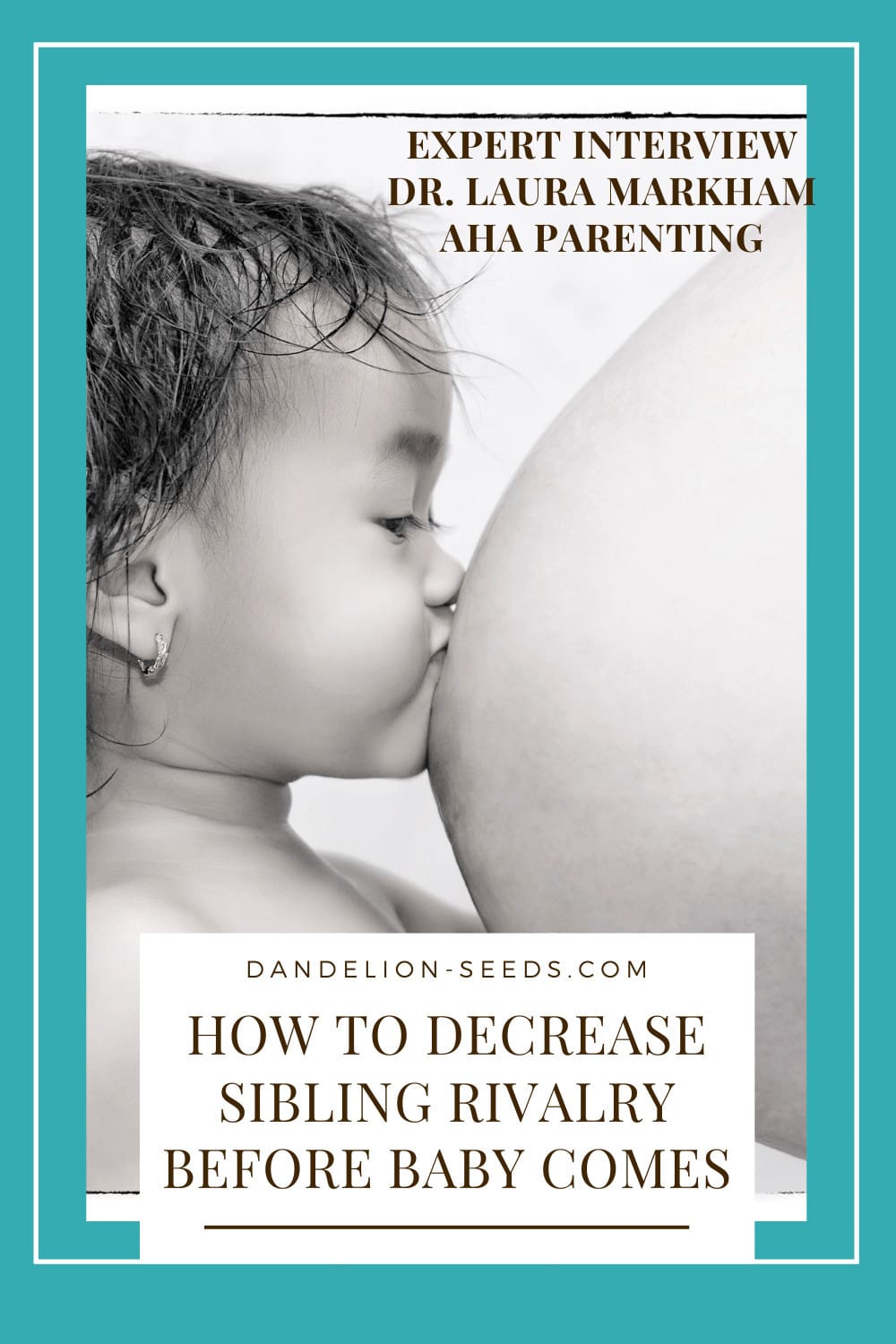
Whatever your child says is okay. If your child says "No, I'm the baby," which is what my daughter said to me, then that's great.
Now you have something to work with. It's good you did that before you said, "Oh, guess what? [You're going to be a big brother.]" Right? When they say "no," you say, "Wow, you really don't want to have it be a big brother or sister. Why not?"
And she says, "I'm the baby."
You can say, "You will always be my baby no matter what. Even if you're a big sister and there's a little boy or a little girl that comes along...you will always be my Alice. I could never love anyone more than I love you." - Dr. Laura on the sibling bond; how to respond if your child resists a new sibling because they want to be the only "baby" in your home
So this is an opportunity before it becomes a fraught thing, where she feels like she can't tell you. She can actually express the negativity. But more often, kids don't express it that directly.
I mean, that's a four-year-old talking, right? More often, they will express it as, "Jason's little sisters always knocking down his towers," or "Chrissy's little brother cries all the time," right?
That's also important, and you can address that. You could say, "Yeah, babies do cry a lot. And you know what? You cried a lot when you were little, but guess what?" You you got a little older and you didn't cry as much, and then we started having so much fun. And if you had a brother or sister, they might cry, but we could take care of them and make them feel better, and then 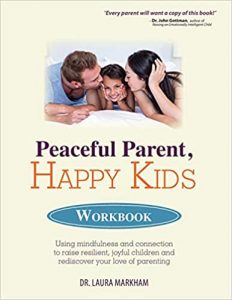 they would get old enough to stop crying and we would have so much fun with them."
they would get old enough to stop crying and we would have so much fun with them."
So there's a way to talk to them about their objections.
It's sort of like if you've ever been in sales, you can't make the sale until you surfaced the objections and helped the customer realize, "Those things don't have to define the transaction. Maybe there's something positive here."
You're doing that with your child. You're starting the conversation even before you tell them they're going to be a big sister or brother. And then when you do tell them again, you're doing it from their perspective.
You're not saying, "Mommy's pregnant. We're going to have a baby." You were saying, "You're going to be a big brother or sister."
And they're like, "Well, what does that mean?" Then you say, "Well, there's a baby growing inside Mommy right now." Or if you're adopting, you say when the baby's going to be coming to live with you. You give them a sense of timing.
You tell them, "You know, it takes a long time for a baby to grow, but when it gets cold, when the leaves start to fall from the trees, that's when the baby will come." Keep it really simple.
If your child expresses any worries, you say "It sounds like maybe you're a little worried about being a big brother."
Sometimes kids worry that that Mommy and Daddy will pay a lot of attention to the baby and not to them, but give them the reassurance of, "There is a Michael-sized place in my heart that is just for you, that no one else could ever fill. I could never love anyone more than I love you."
Your kid gets that "Okay, I've got a protected place here."
Now, that doesn't mean they won't have doubts as time goes by, and that will they will surface. But at least right from the beginning, they're starting to get a sense that you're listening. And they're allowed to talk to you about anything that bothers them. - Dr. Laura Markham on the sibling bond and allowing your children to express themselves fully
If they express any worries or doubts, you say, "Thank you for telling me that. If you ever feel worried about the baby, you can always tell me. I will always want to hear, and I will always understand, and I will always try to help."
I love that so much.
You've touched on one of my love languages, which is books. Books are fabulous tools for a little ones to understand things without having to live them firsthand. And everything else you shared is empathy-based, it's connection-based, it's active listening. It's validating the child's experience rather than imposing our adult perspective upon them.
And I love the space you have created for the child's feelings to process in natural and healthy ways.
Now, let's move on. Baby's here. It's time for introductions and those first days at home.
What can we do now to nurture the sibling bond?
Reality has hit. There's an actual new little body in the house. How can we help our little ones adjust once they realize this isn't just a story we read in the book? This is really happening.
[Kids' first reaction] is often panic. They often go through a moment of panic where they realize the baby's not going away.
So important -- even before the baby actually arrives -- that you've done something to help the sibling bond. That may sound crazy. The baby was in utero.
...There's some research that shows that the way the older child begins to think about the baby is influenced by the way we talk to them about the baby. And the way they think about the baby influences how they feel.
You can start [nurturing the sibling bond] when the baby's in utero, but you continue when the baby is at your house. To begin with, you say things like, "Hmm. I wonder what he's doing in there. Feel this. Is he kicking? You think he's doing karate?" Or, "Let's sing to him and see whether he likes it or not. Do you think we can tell?"
You're acting as if this unseen lump in your belly that's, you know, something's jutting out "Is that really a foot?" You're acting as if it's a real person and it might have feelings.
And then when the baby does arrive, and you're saying, "Oh, I wonder why he's crying. What do you think he needs?" Your child is beginning to develop empathy for the baby in that moment.
The research on this shows that a year later, when the researchers came back, they had some parents who they taught to make comments like this. They [also] had a control group who didn't make those comments. Lo and behold, the parents who made those kinds of comments, the older child felt more positively toward the baby, who is now one year old. And the one year old was much more bonded to the older child because the older child set the tone of the relationship.
We could talk more about it, but that's an example where you could start [nurturing the sibling bond] even before the baby comes home.
Another example is when the baby's still inside you.
Anything you feel that releases neurotransmitters into your bloodstream, your baby is feeling. - Dr. Laura Markham on the importance of our feelings that influence the sibling bond
So when you feel the warm fuzzy of appreciation toward your child, the baby's getting that, too. You can have your child sing to the baby or talk to the baby [to foster the sibling bond]. And as that's happening, you really savor it, really take it in. What you're doing is flooding the baby with neurotransmitters that feel good while they listen to the child's voice.
When the baby's born, the baby is born knowing the voices: your voice, your partner's voice, the other older child's voice. They have a great feeling about the older child. You can even have that go both ways by talking to your older child about how the baby feels when they sing, right?
So, your child gets to sort of participate in those good feelings through what you're describing of how the baby's responding to them. That's another example of the pre-birth sibling bond.

Now we have a new baby.
Let's say you didn't give birth at home. You gave birth at a hospital. You're coming home. You've got the baby in your arms. You're getting out of a car. You've got the baby. Your child is there with Grandma at the door of the house. You don't get the newborn out of the car seat.
All children have an attachment hierarchy. It's completely natural. We're programmed this way. The person who is the most responsive in terms of protection, and also children define that as warmth. "What makes me feel protected and cared for," right? "Who's warm toward me? Who responds when I fall down and skin my knee?"
So that's always the first person in the hierarchy. It's usually the parent who spends the most time with the child, although not always. And then there's the next parent, usually, and then there might be grandma or a nanny or a preschool teacher or whoever.
The first person in that hierarchy enters the house with arms open to their child. They're not holding a baby.
The baby's being held by the partner or someone else. So, you know your newborn can do without you holding them for that moment.
Somebody else can get them out of the car seat and bring them in the house. You've just been separated from your child, probably overnight.
Your job is to hold your arms wide open, because for your child, the big event is not that baby. The big event is that they were separated from you, right? That's what we don't want them to associate the baby with: more separation. - Dr. Laura Markham on how to nurture the sibling bond once baby comes home
We want you to be, "Oh, my darling. I missed you. I'm so glad to see you." Spin them around get them laughing. Laughter reduces the stress hormones in the child's body, which are there because of the separation.
And because of their anxiety about the whole thing with the baby, so you're getting them laughing. Also, laughter increases oxytocin, which is released into the system. Oxytocin is a bonding hormone. Now, not only is your child bonding with you, they're also about to bond with the baby.
You say, "I've got somebody for you to meet. Come on!" And you you install yourself on the couch with your child. You say, "Daddy's bringing in the baby. Want to meet the baby? What are we going to say to the baby?"
You're now aligned with your child, not with the baby.
The other partner brings in the baby.
You're sitting there on the couch and your partner puts the baby on the couch. You're together; it's totally safe. Your three-year-old is not going to drop the baby because you're there to put the baby in your three-year-old's arms.
Now we use biology again. You say, "Doesn't the baby smell good? Smell the top of her head. Yeah." Now this is pheromones at work -- pheromones that the baby gives off. This is one of the reasons that we don't hurt our babies, even when they wake us up in the middle of the night and we're just beside ourselves with lack of sleep. It's because we smell those pheromones and it just makes us want to protect the baby. - Dr. Laura Markham on using biology to nurture the sibling bond
So your child is now inhaling those pheromones from their little sibling. They feel protective. They're going to get pretty annoyed at the sibling more than once in the next week -- forget the next 10 years.
And so, as they're inhaling these pheromones, they're starting to feel protective. That's the first thing that happens -- even before any jealousy or irritation.
That there's a lot of research about this and a lot of science we can use that we can support our children [in the sibling bond].
I love that -- brain science, biological science, it all makes so much sense for the sibling bond.
When we can point to these studies that prove even the things we can't see are still making a difference in the connections that our children are forming together.
We can use that science to our advantage when we decide what kind of parents do we want to be. This isn't just a relationship between our children. This is a family dynamic. And we foster the type of relationship within our homes that is peaceful; that is conducive to positive relationships for all of us -- not just the sibling bond among our children.
Stay tuned for the next section of the interview, where Dr. Laura Markham talks about nurturing the sibling bond as the siblings get older.
In the meantime, make sure to check out our short but information-packed parenting courses.
Dr. Laura Markham is the founder of AhaParenting.com and author of Peaceful Parent, Happy Kids, Peaceful Parent, Happy Siblings and her latest book, the Peaceful Parent, Happy Kids Workbook.
Below is Part 4 from my recent interview with Tina Payne Bryson, Ph.D. about her incredible new book, The Bottom Line for Baby. In this segment, she talks about the scientific support for gentle parenting.
If you missed Part 1, Part 2, or Part 3, you can catch up here.
You talked about gentle parenting and attachment parenting early on, and said how it certainly can be linked to secure attachment, but not necessarily. Some of the biggest pushback we get for gentle parenting sounds like this:
So, for the parent who wants to breastfeed, possibly even do extended breastfeeding; for the parent who wants to baby wear; for the parent who wants to sleep with their child safely in the same room; and practice all of these crunchy / positive / conscious / gentle parenting (or whatever you want to call it) -- practice THIS way of parenting versus the mainstream alternative:
I love that you ask this because we do, especially from family members, get a lot of pushback about this kind of parenting.
I remember a time when I had a one-year-old son, and my other son was four. My four-year-old was having a really hard time, and my one year old was also crying.
I crouched down low and I was saying, "You're having a really hard time. What is your body saying it needs right now?" And while I'm doing all of this reflective dialogue, my grandmother started criticizing me.
We used baby sign language, you know, which was phenomenal. I'm a huge fan. My kids, before they had the motor capacity to talk, could tell me if they were hurt. They could tell me if they needed comfort.
It was just phenomenal. I loved it, and [my family] was like, "They're never going to talk. You're raising Coco the ape, you know. They're never going to talk."
And of course they were early talkers. They were just fine.
But when [my family] would see me parenting and getting down and all the stuff, at first they were like, "You just need to smack him and tell him, you know..." They were just...they didn't get it.
They were worried that I was being really indulgent.
As my kids got older, I remember -- I'm feeling the emotion of this right now too. It's okay if I get a little emotional.
I remember my grandma saying, "I can't believe how amazing your kids are and how much facility they have in handling themselves. They're so well-behaved."
She was shocked because she thought they were going to be little monsters.
And she added, "They're so well-behaved. I wish I had known about what you know. How I wish I had parented that way." - Tina Payne Bryson, talking about the transition her extended family made to supporting gentle parenting
It was so amazing because this was a grandmother who had significantly avoidant attachment that she passed down to my dad, and my dad also parented me in that way.
So, for her to see it, it just felt like such good affirmation.
What the science tells us -- and this is what's so great about The Bottom Line for Baby -- is you can turn to the discipline entry, and you can be like, "Here, mother-in-law, read this -- read the science [on gentle parenting] and then we can talk about it."
The the science is super clear that when we push kids to be independent or to be well-behaved, where we're just focusing on the behavior; if we push them to do those things without our support, it actually backfires. - Tina Payne Bryson, Ph.D.
It actually makes them either more dependent because they developmentally weren't ready for [the task] without our support. Or, they actually learn not to share their distress with you. So, they just stay uncomfortable.
They just sit with those alone feelings.
What the research shows is that when you are a safe haven, and you practice positive, respectful, gentle parenting, you really focus on those 4 Ss -- Safe, Seen, Soothed, Secure -- it promotes better behavior.
They're always my answer for every situation.
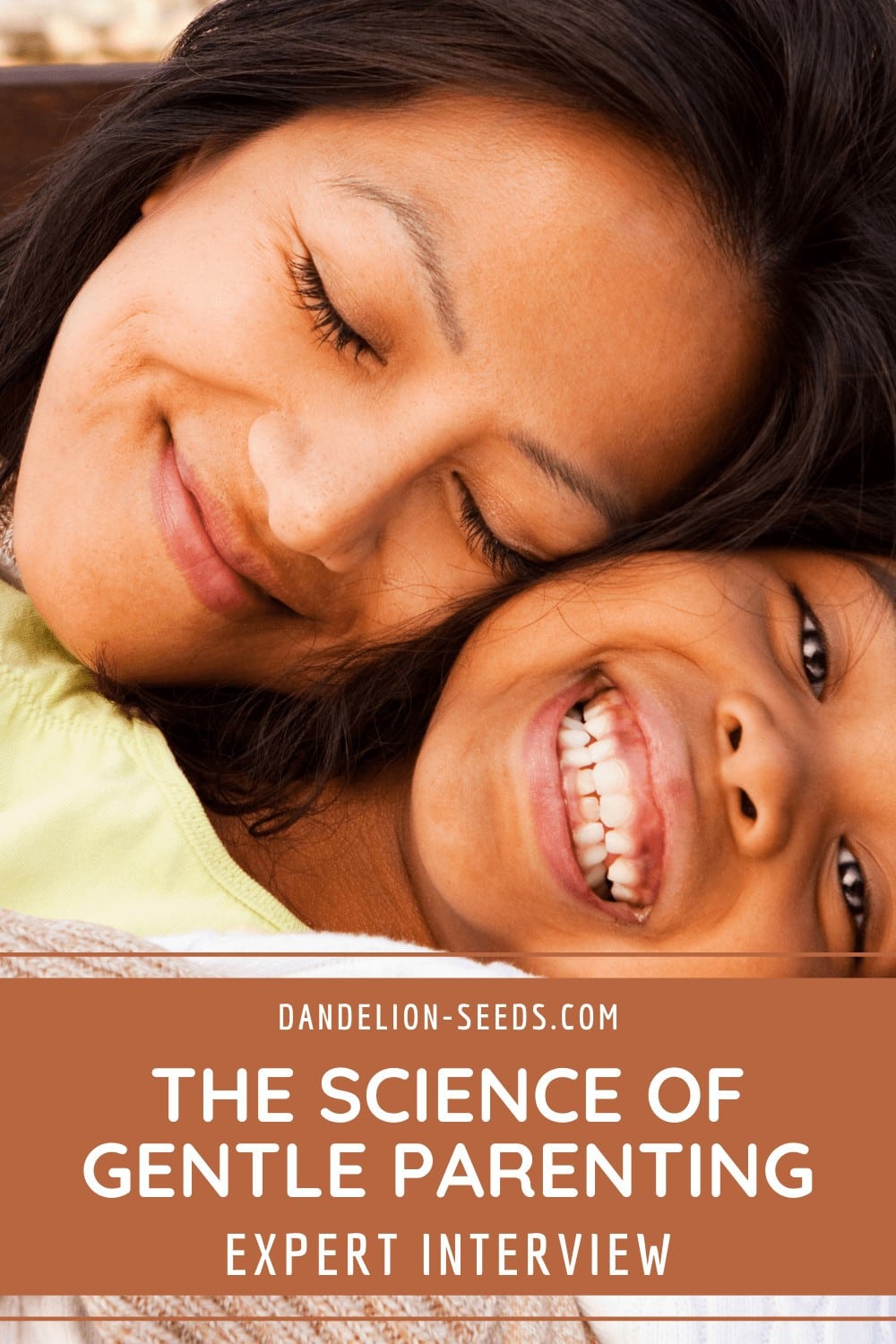
What the research says is that [gentle parenting] actually promotes independence; [gentle parenting] promotes better behavior. All of these things.
The science is on our side with [gentle parenting], you know, including extended breastfeeding.
No one knows your child like you do. You are the expert on your child. Get informed. Yes, read books. Read about what the science says, but you can't follow every single thing that the science says.
Some of them are even [contradictory], like one says be a really well-rested parent and the other one says breastfeed your child on demand.
You can't be both. You can't follow both of those.
Every child is unique. Follow the lead of your child. - Tina Payne Bryson, Ph.D.
...
Around this gentle parenting, what we're doing is we're giving kids reps [like exercise that builds muscles] for using their prefrontal cortex by saying, "Hmmm. I'm noticing this. How do you think we can solve that problem?" instead of saying, "Get over there and sit down."
And what we know from the science, too, is that parents who do [this gentle parenting approach] instead of a more command-and-demand authoritarian type of parenting -- it doesn't change their children's behavior.
Their children learn to hide their behaviors and when they're adolescents. The science says they don't go to their parents when they're in tricky situations. They go to their peers.
When our children come to us with bad behavior, it is often a symptom of a dysregulated nervous system. They're saying, "I need help right now."
When we respond to them, we need to show up for them. Even when they say something like, "I wanted popcorn. Why won't you give me popcorn?" And you're like, "Really? Because I'm taking you to the movies and you're going to say that?" You know, you get so upset about your child being "spoiled."
In that moment, if you respond that way, our child is like, "I just shared how I felt with them. I'm really disappointed and I shared that and I feel criticized -- and that didn't feel good."
When our children communicate with us and we respond in ways that don't feel good to them, they will stop sharing with us.
When we say, "I don't want to hear it," they internalize that. So that doesn't mean I give them the popcorn. I can say, "I know you're so disappointed. You wanted the popcorn. We're not buying it today. And I know it's disappointing. It's hard to feel disappointed."
So, it's not about the boundary. I'm going to hold the boundary, but it's really about saying "yes" to our children's internal experiences, showing up for them -- and the science has our backs on this. - Tina Payne Bryson on the importance of respectful, gentle parenting
Extended breastfeeding is supported by every health organization around the world...If that works for you and your family and it feels right -- do it.
I want to empower you. You know your child. Trust your child. Trust your instincts.
If anybody's criticizing you, listen, they might have a point. But don't let it rule your life.
Absolutely, and if they need the best reference book that I have found to date on why we do what we do for babies -- your new book is it. I will unequivocally recommend it to every new parent, every existing parent -- even if they already have a child, or two, or 15.
There's just so much great, compelling information in here and the world needs to know that there is some really smart gentle parenting advice that we know to be smart because we have the science to prove it.
We don't necessarily have to repeat these generational patterns that even you, and so many of the rest of us, have had. We can choose to do what works for our family.
Science has our backs when we make what seem to be different decisions from so many around us. Your book provides exactly the kind of validation that we need as we go into gentle parenting.
So thank you so much for writing it, for writing all the other books you've written, for existing. Thank you, also, for being a resource for people around the world who really just need to know "I can figure this out. This child might just make it to day 3 and day 4 and beyond, because it all feels new sometimes."
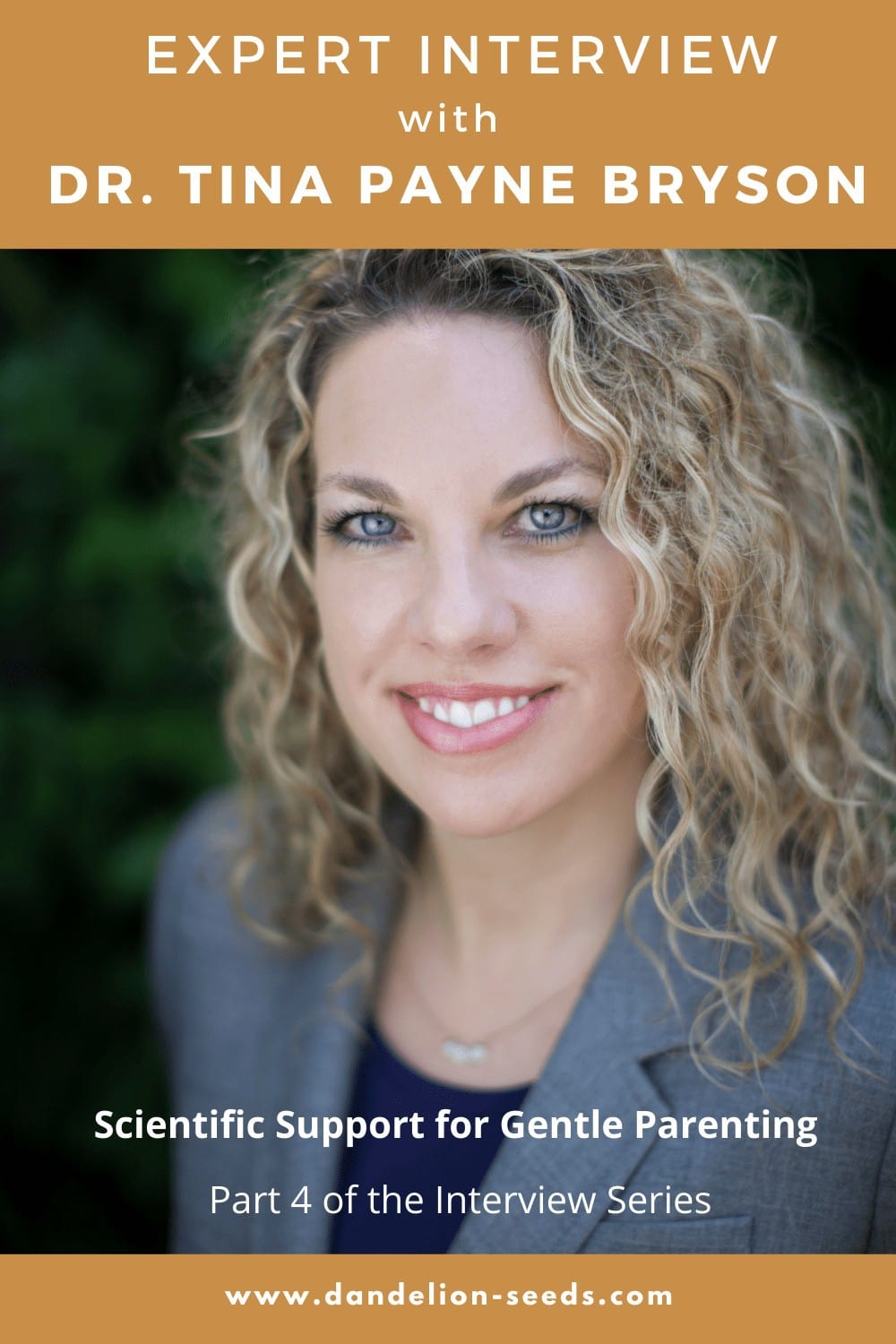
And you know I think, too, we have to remember everybody's kid is different. What works for one kid doesn't work for the next. I think it's important that we really follow our children's lead.
And I want to say to you to parents, if you don't have time to sit and read -- and I'm actually writing an article right now for parents never who find time to read -- all of my books are in audio form.
I've done a lot of podcasts just like this one on No-Drama Discipline, Whole-Brain Child and on my website TinaBryson.com. You can find tons of free content.
I post on Instagram all the time, just helpful little snippets and resources, so you can find me there as well.
But I want to say one final thing if it's alright, Sarah, and then I'll let you close this out.
Parents, I just want to say to you -- you sacrifice so much for your children. I know you do. If you're listening to this podcast, you're a parent who is really intentional, and we're so good at sacrificing and giving to our children.
But I want to say to you that you matter, too. And we need to really, really -- and I'm so I'm such a hypocrite; I was terrible at this when my kids were younger and I'm better at it now -- but you really do matter. Your children, what they need most from you, is you. And for you to be present.
In order to do that, you really do have to take care of yourself. It's one of the best things you can do for your kids.
That is an important gift and an important takeaway, so thank you for that. I will do my best to implement that personally, and encourage the other parent seeing this to do that as well.
We've got to keep working on it.
Exactly. Thank you so much, Tina.
Additional recommended reading by Tina Payne Bryson, Ph.D. and Daniel J. Siegel, M.D.:

This is an excerpt of an interview with Tina Payne Bryson, Ph.D., where she

discusses her incredible new book, The Bottom Line for Baby -- along with several game-changing parenting tips. You can find the full interview here. Or, here's Part 1 of our discussion if you missed it.
In this segment, we discuss the question, "Why don't we remember being babies?" We also cover how baby memory and memory function work, and how baby memory relates to children's growth and development.
So let me get straight to some brain science with you.
Former baby here. I confess. I used to be a baby. [laughter]
I don't remember much of it at all. My daughter, on the other hand, claims she remembers the womb. I don't personally remember the womb and anything after it for a good long time.
So, if we don't really remember our earliest months our earliest year on Earth, how do we know that any of it matters? Why don't we remember being babies?
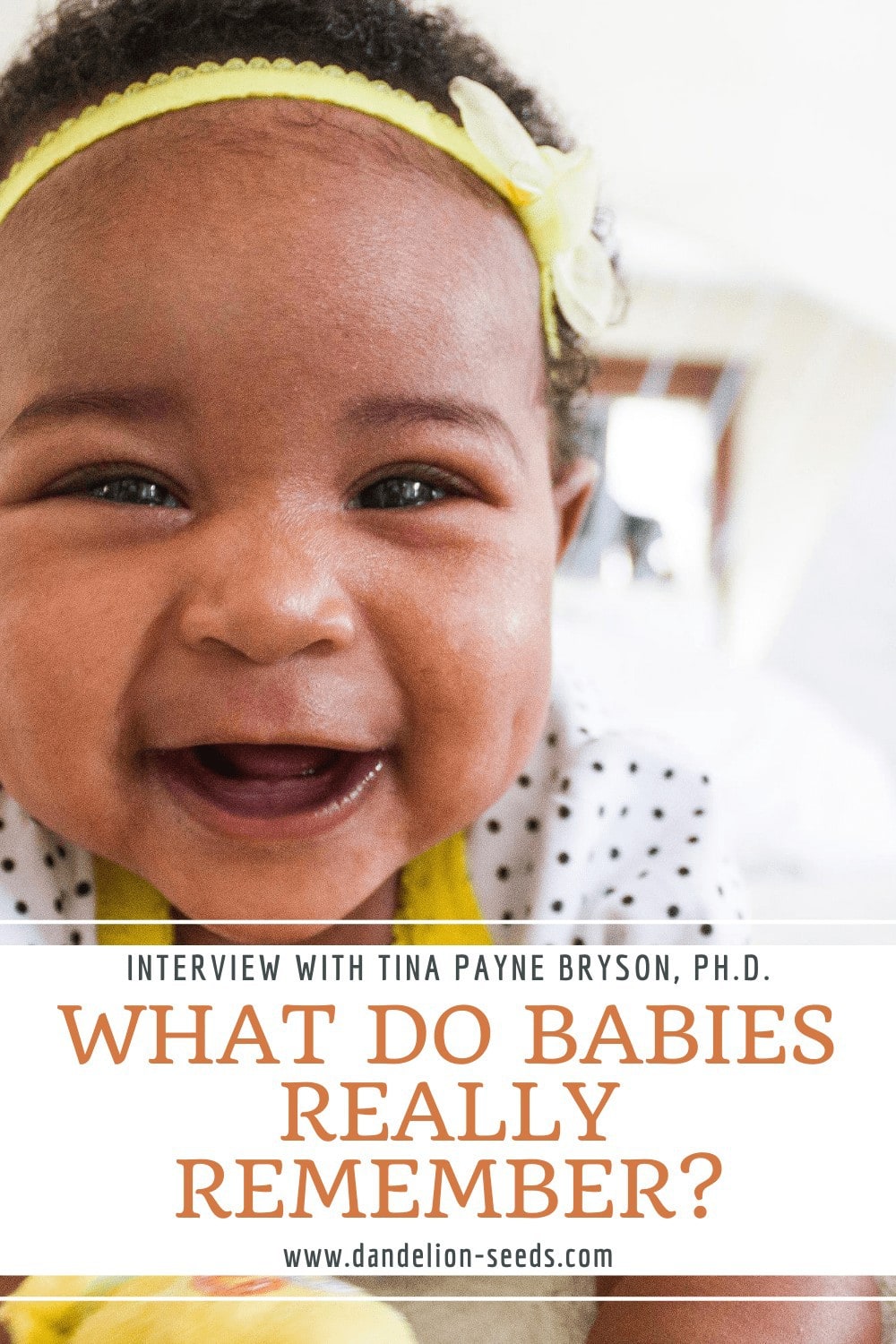
That's such a great question. Actually, most of us have what's called childhood amnesia until about age 5, where we don't really remember much.
We may have one or two memories from before age 5 or 6, but they typically tend to be something that was a huge change.
I have an early, early memory around age three, when I had to be taken to the hospital to get stitches on my head. I remember being in my 70s purple poncho with the little palms in my dad's arms and I remember the parking lot.
I remember some things about it, but that's the only thing I remember from that age.
That's really typical for most of us not to remember. However, when we say we don't remember, we're actually talking about something called explicit memory. Dan and I write about this in The Whole-Brain Child.
That memory is where you remember something and it has the feel of remembering. You know you're remembering.
If I were to say to you, "What did you have for breakfast this morning?" You could tell me. You would know you are remembering that fact, but there's also something called implicit memory.
Implicit memory is where you are remembering but you don't know you're remembering. It doesn't have the feel of that.
An example of that is what's called a type of implicit memory is called procedural memory.
When you get in your car and you drive you're able to do that because you remember all of the the motor activity and attentional resources and all the things you need to do in order to drive your car.
But when you get in, and you put your seatbelt on, and you put your car in reverse, and you start backing up, you're not thinking "I am now remembering how to drive a car." You just know how to do it.
Memory is association. That's really all memory is.
When I say "Drinking hot chocolate that's too hot, or coffee, that's too hot, you all know the physical sensation of when you burn your mouth and it feels like sandpaper. All of those are associations with those experiences.
That's the implicit memory.
We believe that implicit memory may even start in the womb.
-Tina Payne Bryson on Why Don't We Remember Being Babies and Baby Memory
So, when people say "Don't worry about this medical procedure, don't worry about this trauma that happened to your child because they won't remember it," they mean they won't remember it explicitly.
But the body keeps the score. That's Bessel Van der Kolk's title of his book about trauma, that I love. Our implicit memory remembers that, and it's important because the purpose of our memory is to keep us safe.
My son had a kind of traumatic swimming lesson experience when he was about four. He didn't really "remember it" remember it, but later when it was time to go to swimming lessons, even though he could already swim,
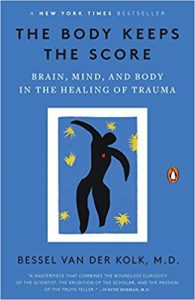
and he loved swimming with his friends, when I said the words "swimming lessons," he was immediately like, "Do I have to go?"
His brain remembered whatever that is, is a bad idea.
So, you know when we touch something hot, it's painful. Our brain remembers that so we don't do it again.
Even in those early first five or six years, that is when the brain has the most changes happening, most of them happening between zero to three. It's the period of the most connections and brain change.
The second period of the most brain changes is during adolescence.
So let me say it this way, Sarah. What happens to us in our early months and years matters tremendously, but it doesn't mean that it's that our history is always our destiny.
- Tina Payne Bryson on Why Don't We Remember Being Babies?
So if we do have difficult things that happen to us in our early years, they are important, but it doesn't mean that there's no hope.
So, the brain is plastic [neuroplasticity] and we can make changes or process difficult things that happened.
One of the things I'll say related to the science of this is [the existence of] regulatory circuitry, which is really the part of the brain that helps us regulate our emotions and regulate our attention and regulate our bodily states.

It's the part of our brain that allows us to really be grounded and get back to baseline when we have challenges or adversity. The regulatory circuits of the brain are set up in the first 18 months.
So those early, early months, the way we respond to our infants by helping them feel safe, by helping them build trust that their needs will be seen in responded to -- that we help regulate their bodily states and their emotions and their attention -- by us doing that with them, we are actually setting up the regulatory circuits of the brain so that they have a greater capacity to regulate themselves better for the rest of their living years.
-Tina Payne Bryson on Why Don't We Remember Being Babies and Baby Memory
That is a fantastically clear explanation of baby memory [and why don't we remember being babies] -- something that is, you know worth of volumes of encyclopedia materials. Thank you for that.
***
In Part 3 of our interview series, we'll discuss co-regulation versus self-soothing -- and the best way to help our children develop executive functioning skills. Stay tuned!

Peaceful parenting feels like it should come naturally to us. Reality, however, is that we're sometimes anything but peaceful with those we love most. Despite our best intentions, we snap at our children; we feel exasperation ooze forth from our parent-bodies.
Parenting can be much harder than "regular" adulting.
As I've said before, the culprit is that we're humans living with other humans. That is inherently tricky, no matter how much we love our children. Our moments of suboptimal parenting don't mean we're a "bad" parent overall. Science says we're often simply emotionally exhausted. (Here's what to do if we find ourselves feeling that way.)
The parent-child relationship doesn't need to be tricky all the time, however. We can parent in a way that changes everything for the better with our children. We can finally and truly live in a way that helps us release whatever guilt we've been harboring and feel better.
Peaceful parenting makes our days easier, not only for us, but also for our children.
I find many of the peaceful parenting concepts I've read about to be helpful. However, while they're great in theory, I've sometimes feel ill-equipped when I'm "in the moment" of parenting my child.
Resultantly, I devised the "HUG" process -- a quick acronym to help me remember exactly what to do when tensions rise with the children in my life -- the ones I've taught and the one I'm raising at home.
Peaceful parenting benefits not only our children, but us, too. It offers us all a more peaceful home life. I like peace. That's my motivation.
Let’s pull each of those apart with an example of what peaceful parenting looks like in action.
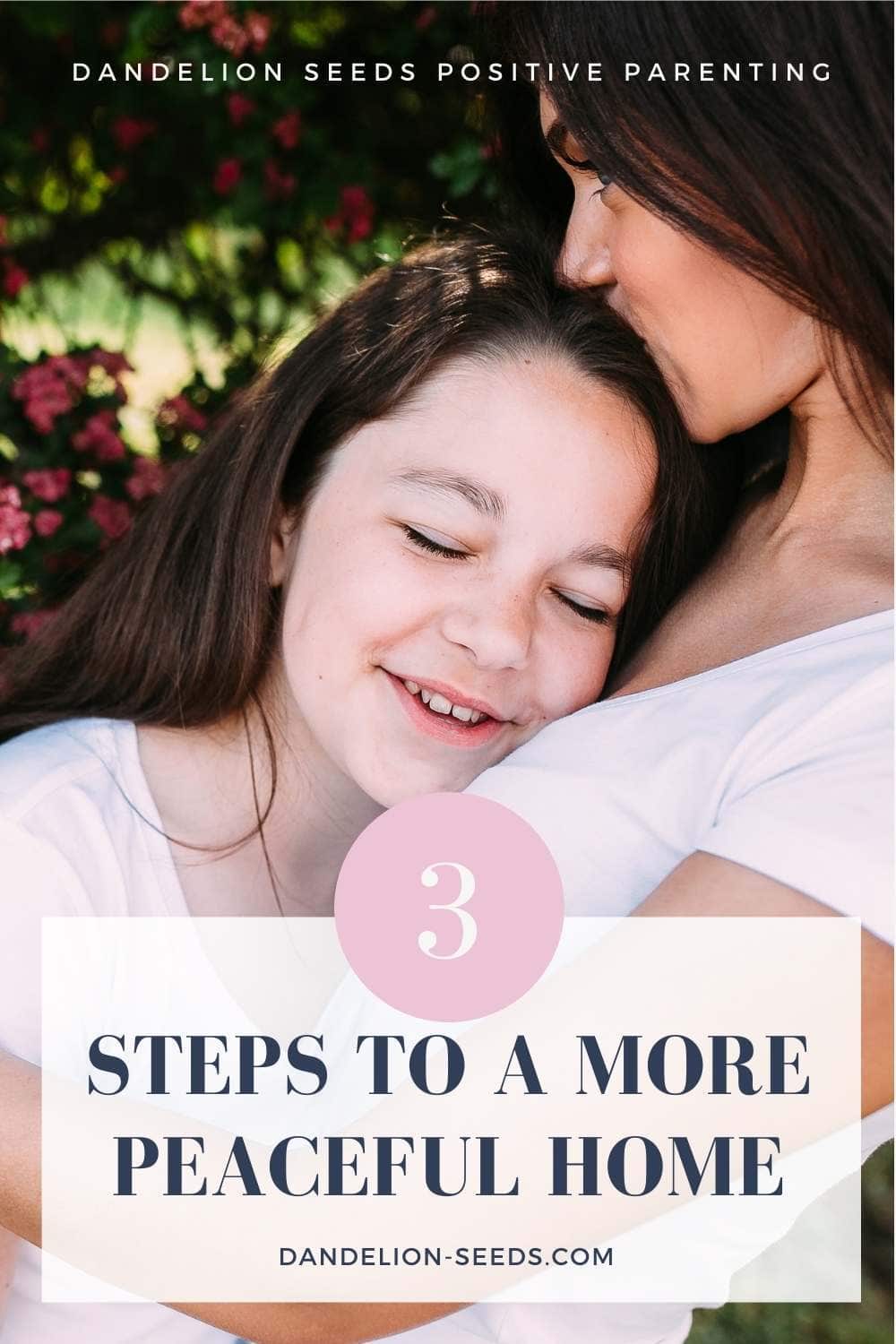
Let’s say your 5-year-old child just poured all the dog food from the bowl onto the floor, seemingly intentionally. She’s no longer a toddler (where this would be developmentally normal behavior). She regards you with the “look” that tells you, “I know you saw me do this -- and I did it anyway.”
When things like this happen, we sometimes wonder if we should just throw in the towel right here. It can feel like our kids are out to “get” us . And let’s face it, sometimes it feels like they’re winning.
When we’re not consciously focused on peaceful parenting, our reaction might be to yell, accuse, shame, punish, or somehow use our internal angst to “deal with it” right in that moment. We, ourselves, go into fight-or-flight mode when we react from a big emotional response.
We must remember that it's not parents versus children; it's parents and children versus whatever problems they're trying to solve. No one's "winning" -- we're working together. We're on the same team.
Just like with all emotionally heated situations, however, reacting on the fly doesn’t usually work for the greater good. We are not likely to be calm and emotionally grounded in these moments.
We know we want to embody peaceful parenting – but we need tools to help us.
Here’s what parenting this way looks like in action.
How do you do that?
Many of us have read about ways to help our children calm down when they’re upset. Many of those approaches work well for us, too. I talk about several of them in this short but information-packed course. A few quick ones for parents to remember are these:
If you're worried that your 5-year-old child isn't learning from an immediate consequence of their actions, remember that the most important message they might learn here is emotional regulation.
They're watching how you use your calming tools. With experience, they'll grow to model them.
Part of parents' ability to do this, of course, is having the emotional reserves to manage these situations when they come up. Self-care “feeds” us those reserves. Self-care isn't optional; your kids need you to do it.
While you’re holding your reaction (or as some say, "practicing the pause," and after you feel your heart rate return to normal, move onto the “U” of the HUG process.
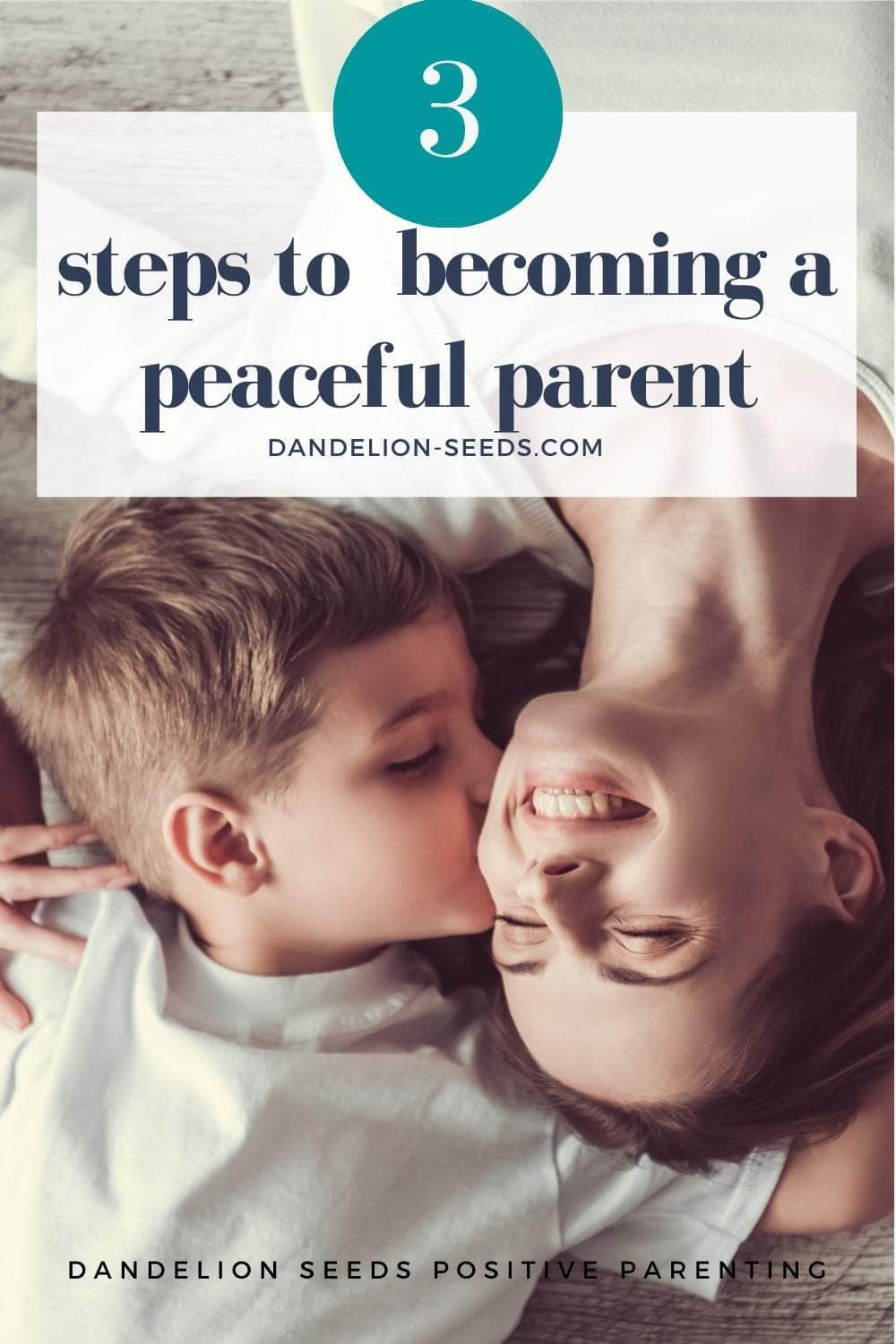
Ask yourself this: “From their perspective, what might have driven their behavior?”
If you find yourself mentally launching into accusations, return to the H. Hold on. Dig deeper.
Put yourself in your child’s shoes. Did something happen that made them feel disconnected? Were they seeking attention, which you can reframe as seeking attachment? (Here’s how to handle that.) What’s going on in their world that might’ve been the impetus for their action? They might not have the words to articulate what it was, but it's always somewhere beneath the surface.
As unlikely as it may feel in the moment, children want to do well for us. Try to give them the same benefit of the doubt you'd want if you'd somehow behaved sub-optimally. You'd want others to understand what motivated you to do it, deep down inside. This is hard but important work.
Once you've worked to understand your children's perspective, the natural human response is compassion. It doesn't necessarily mean you agree with them; it means you value their humanity.
Look at the big picture from the framework of peaceful parenting: have they experienced changes in their life that are causing stress in ways you might not have realized were related? Are they feeling connected to you, their siblings, and their classmates? Are they working to learn a new skill that's feeling hard for them? Are they grieving or re-living an old wound?
You can empathize with whatever they've been processing, and start thinking more objectively about what's motivated their behavior. Once you've let yourself drift into empathy mode, move onto the “G” of the peaceful parenting HUG process.
Oftentimes, if we can find the presence of mind to see their perspective, peaceful parenting will come about naturally from the compassion we've allowed to rise up in our bodies.
“I wonder…” statements work well here. So do, “I’m curious about…” Invite your child to share their heart with you about what happened. If your child isn’t volunteering an explanation (which is very, very common), it’s okay if you offer a theory. It might sound something like this:
“I wonder if you were feeling angry that I was on the phone for a long time. Are you craving some special time together?”
In peaceful parenting, listen without defending; truly listen. What is their heart trying to tell you? Regardless what they say, the message you want to drive home in this moment is, “You’re safe to share your feelings with me.”
Take whatever they offer as feedback as part of the bigger picture. This can be your guidepost to figure out what they’re needing. Odds are good that once that underlying need is met, they won't feel the need to pour out the dog food again. Remember Dr. Ross Greene's sage reminder: "Kids do well when they can."
I’m never going to advocate punishment. That show isn’t on this channel.
In lieu of punishment, try a time-in. Here, your child has the opportunity to co-regulate with you. As I discussed with Tina Payne Bryson, Ph.D., co-regulation is a powerful tool for growing healthy brains.
If they've already moved past the incident, don't worry that you've "missed your chance" to instill ways to do better. Discipline -- teaching -- can still happen with your child. Consequences simply take a different form with peaceful parenting: it's a gentle allowance for the full expression of feelings. It's parenting for connection one moment, one love- and grace-based decision, at a time.
I don't necessarily expect us to clean up after our kids, at least not every time.
Sometimes, though, I think it’s perfectly fine to clean up after them (or at least alongside them). Healthy, in fact. In doing so, we model graciousness. We model that it's okay to help each other out when we're having a rough time. It's an act of service, which is a love language unto itself.
Alternatively, if the child is emotionally centered again, I might lightheartedly say, “Now that we’ve had a good chat, how about I hold the dog’s bowl and you see how many pieces you can drop into it from 6 inches above it?” Or, “Would you rather hold the broom or the dustpan?” Collaborative, playful parenting can help diffuse the tension and get rid of the question of “Whose responsibility is it?”
If anyone wonders, "But wait -- the child intentionally threw the food on the floor. Don't I need to teach them a lesson somehow? How will they learn?" My answer is this: yes, you do need to teach them a lesson. Not in the traditional disciplinarian way, however.
Debrief with them. Once they're calm (and you're calm, too), summarize in a single sentence or two why they shouldn't have done what they did. Here's the important part -- now, brainstorm together about better ways to handle the situation in the future.
Example: "The dog's food needs to stay in the bowl so no one slips on it. It's a safety hazard on the floor." [Healthy boundary setting.] "Now that I know you were wanting some snuggle time while I was on my phone, however, let's think about some ways you could let me know next time."
If your child was feeling disconnected, for example, perhaps you invite them to hand you a special piece of paper that says what they need. Some children aren't comfortable verbalizing their needs, but with coaching, a non-verbal way to communicate their needs works well. If they're too young to write, they might draw a picture of what they want to say (or hold up a pre-selected picture of it).
We’re all going to mess up sometimes – and that’s okay (rupture and repair is a fascinating process). We don't always feel peaceful. What matters is that we’re trying. The very fact that peaceful parenting is now in our consciousness gives us an edge over a life where it's not even on our parenting radar.
Our kids will see our peaceful parenting efforts. We’ll connect more deeply, knowing our connection is solid. If we rupture that connection sometimes, repair comes more easily.
Children aren't out to “get us” parents. They are, however, out to connect with us – deeply and in meaningful ways. Peaceful parenting is a wonderful part of the parent-child dynamic, fostering the very connection that every single one of us craves.
This is an excerpt from an interview between Sarah R. Moore of Dandelion Seeds Positive Parenting and Tina Payne Bryson, Ph.D., New York Times best-selling author. In this segment, we discuss the genesis of her incredible book, The Bottom Line for Baby. (afflinks)
Watch the full interview here, where Tina Payne Bryson discusses the book in more detail, along with brain science and the "why" behind the decisions we make about raising our babies. Below is an excerpt: the first in a series that I'll be publishing in the coming days.
At the bottom of this page, I'll share my critical review of the book. Make sure to read why this book belongs in every home.
I'm here with Dr. Tina Payne Bryson to talk to you today about her fantastic new book, The Bottom Line for Baby. As many of you know, I am a huge

fan of her work.
She has co-written, with Dr. Daniel J. Siegel, so many books that have substantially influenced the way that I parent my own child and the recommendations and the advice that I give to my clients.
The Whole-Brain Child was the first one I read. I've also loved The Power of Showing Up, The Yes Brain, and No-Drama Discipline, which I happen to have in moving boxes because we have just moved house (but I would hold them up on video here if I could find them, along with my missing silverware). You have now written what I'm guessing will soon be another best-selling book, The Bottom Line for Baby.
How did you make the shift from older kids back to babies?
Thank you so much for talking with me about The Bottom Line for Baby. I'm so excited about this book.
This was the first book I had a longing for as a parent, myself.
As a new parent, I'm someone who really likes information. I feel more safe and secure when I've got good information.
With my first, I felt like every decision I was making was so important and so paramount. So, I would read about it or I would ask people for their advice. It seemed like for every answer I got, there was a competing additional answer.
There was so much competing information. I felt really paralyzed oftentimes about how do I make this decision? What can I trust, you know? Who can I trust?
Then at other times, I was getting unsolicited advice that I thought was not great advice, and I didn't really know how to refute it because I was so inexperienced.
The Bottom Line for Baby is the book I wanted and needed myself as a parent.
I'm so honored and have loved writing books with Dan. We will be writing more together down the road.
I'm excited about this being my first solo book. It's going to help inform parents.
The Bottom Line for Baby has over 60 topics. They're the ones we get the most conflicting information about. It covers co-sleeping; sleep training; circumcision, baby-led weaning; can we drink alcohol if we're nursing; is it okay to have my young kid in front of a screen; all of those kinds of questions.
- Tina Payne Bryson
Plus, it's alphabetical, so you can just flip to the topic you want. It's laid out like this: What are the main perspectives or arguments on this topic? Then, what does the science say?

So I have reviewed the science on each of these topics, and that leads to the bottom line.
Each section has a "bottom line" that explains when the science is really clear about the topic. It says, "here's what is recommended." Or, "There's not good science on this, but here are two things to think about for what works for your family."
In about a third of the entries, I give a little note from me that really talks about what I did, or what I didn't do, or what I wish I had known, or something personal like that.
What I love so much about this book, too, is that no matter what decision you make on any of these topics, you will not feel judged because every child is different; every family is different. And you know, there are very few absolute universals and have-to's, and every decision we make impacts all the other decisions we make.
So, we can't really ever tell someone that they should or shouldn't do anything in particular, unless it's a basic safety thing because there are there are lots and lots and lots of ways to be really good parents.
My hope is that The Bottom Line for Baby will inform parents and give them a quick way to get the best scientific, up-to-date information on many topics. I hope parents will feel not judged, but rather, empowered to follow their baby's lead, to trust themselves, and to do what works best for their families.
- Tina Payne Bryson
I guess, too, my hope is that for all of those decisions that feel so heavy, that I can help parents go, "Okay, no matter what I decide on this, my kid's going to be great."
It doesn't matter as much as it feels like it matters, so take a little bit of the pressure and weight off. That's what I'm really thrilled to share with parents.
Those are precisely the things that I love about reading this book. It has been oh, I don't know, probably since I was in grad school a thousand years ago that I finished a book in two nights. I finished your book in two nights because it was compelling. I wanted to know what the research said.
My child isn't a baby anymore, but I wondered, "How'd I do?"
It's beautifully organized and it's so logical. As you mentioned, this is not the "how-to" book.
For me, this is the WHY book. Why do we do things the way that we do? And that alone made me want to keep reading.
Again, the organization and the personal touches -- oh my goodness, reading it for your Diaper Genie story alone would have been worthwhile for me. So let me just put that out there.
It's the most embarrassing, mortifying story that I still can't believe I put in print. It's just one of those new mom moments where you realize you did something really stupid.
The fact that you humanize this book throughout makes it not just the science, but about the real people that we all are, because we all have those mortifying moments. Believe me. I have plenty.
Thank you for being so real. These stories and your research make your book so easy to read.
And now, former baby here. I confess. I used to be a baby. I don't remember much of it at all.
My daughter, on the other hand, claims she remembers the womb. I don't personally remember the womb and anything after it for a good long time.
So, if we don't really remember our earliest months our earliest year on Earth, how do we know that any of it matters?
That's such a great question.
***
Stay tuned for the rest of the interview, where Tina Payne Bryson, Ph.D., continues the conversation about the "whys" of parenting for connection.
Or, you can see our entire conversation now in the full video.
You may also like this blog post: Attention-Seeking Behavior: 3 Important Reasons Not to Ignore It (and What to Do Instead).
Tina Payne Bryson is no stranger to writing straightforward, easy-to-understand, and best of all, easy-to-implement parenting strategies. Her writing simply makes sense: it's not only logical, but it also speaks to the hearts of parents who want to do well for their kids. It's the perfect balance.
As we discussed, this isn't simply a "how to" book. Many of her other books with co-author Daniel J. Siegel, M.D., provide proven, connection-based approaches to handling many everyday parenting scenarios.
Instead of "how to," this is the WHY book. This book gives us the science we need to feel confident that no matter who challenges our parenting decisions in our personal lives, we have the science at our fingertips to validate our choices. I can think of few tools more practical or empowering.
Even more, it helps us quiet our inner voices that may make us question how we're parenting our babies.
Just as What To Expect When You're Expecting was the recommended "must-read" for many years, this book should be not only on the shelves, but also in the hands, of all expectant and new parents. It's the book we all need now. We need it today, in this age of parenting. Every page of The Bottom Line for Baby is relevant.
It's empowering. It's practical. It's -- dare I say -- downright entertaining as Tina Payne Bryson humanizes it throughout with her own personal anecdotes. It's easy to turn the pages for the sheer enjoyment of her writing, while learning and absorbing all the practical science along the way.
She shares the science in a way that doesn't leave you wondering why you should make the choices you do; it reads nothing like a textbook.
It "translates" science into heart-understanding. When I read it, it felt as if I were holding the wisdom of some scientifically sage and gifted grandmother, guiding me through all the things my new parent-brain yearned to know.
Tina Payne Bryson, in The Bottom Line for Baby, gives us not only the science to make smart decisions, but also the sense of peace we need to trust the book as the go-to resource we need on topics that might otherwise feel overwhelming.
Perhaps what I love most about Tina Payne Bryson's approach, and specifically The Bottom Line for Baby, are that everything she writes about is from the framework of connection. Attachment science is her guidepost; her recommendations help foster secure attachment in our babies and children.
From what better perspective could she possibly write?
Additional recommended reading by Tina Payne Bryson, Ph.D. and Daniel J. Siegel, M.D.:

Halloween for kids is going to be a bit, ahem, different this year for many of us. For one thing, how do we do socially distanced trick-or-treating? Do we don helmets and hurl candy at each other from across the street?
Nope, that doesn't seem reasonable.
So, how can we make Halloween for kids enjoyable this year -- while also keeping them, their loved ones, and everyone else in our communities as safe as possible?
I'll share 10 fun ideas below. I'd love to hear what else you'd add to the list, as well.

Here are 10 fun ideas to make Halloween for kids as lighthearted as possible this year. You never know -- some of these ideas might even stick around when things are back to "normal" someday!
Much like the Easter Egg hunt, we can hide trinkets, candy, or whatever our children would normally enjoy collecting from neighbors, and hide those things in our own yards, instead.
Hiding them inside also works well if the weather or other conditions aren't conducive to an outdoor search.
The best way to orchestrate the search as an earth-conscious parent is to hide the surprises without any sort of packaging. There's plenty of camouflage in nature!
If you would like to package the surprises somehow, you and your kids can decorate your existing Easter eggs (if you have them) with a Halloween for Kids theme. Maybe that means painting fun monster faces on the eggs with washable paint or stickers.
Or, if you're looking for ready-made and reusable monster eggs, these work well:

For better or worse, many of our kids are used to seeing each other from a distance this year. There's no reason we can't turn this into a positive, though, when it comes to costumes. Schedule a special video meeting or socially distant park gathering to model those fun costumes together.
We all know that one of the most fun parts of Halloween is watching all the kids in costumes walk up and down the block. There's no reason the walking can't happen this year as long as proper safety precautions are followed.
It might be just the sense of community you or your neighbors need, even if you're not stopping to visit this year.
If your family is wearing masks, you can incorporate them into the costumes. Anyone want to draw some kitty whiskers on the mask to make the perfect cat costume for kids?
I don't know about at your house, but since face scrubbing doesn't always go over well with my little one, it's much easier to throw a mask into the laundry. Win/win if she can just pop off her mask and be done with getting clean.
Get out that construction paper and make some pumpkins and whatever else you associate with Halloween for kids. Hang your child's creations around the house, in the windows, and even in places in the car that won't impede your vision.
Do you have a friend or family member who you've continued to see safely during social distancing? Even if that person isn't normally someone you see on Halloween, see if they'd be willing to have your child visit their home (even if just outside) for a special Halloween surprise that you've organized ahead of time.
See how many pumpkins your kids can count on doorsteps, in windows, and perhaps even growing in someone's garden! How about black cats or other decorations? What else can they find?
Orange cupcakes, anyone?
Also, remember that game many of us played as kids where we reached into a bag and tried, without looking, to guess the mystery food inside? You can make spaghetti, cut up orange slices, or find some other food with which to play Halloween-ish dinnertime "tricks."
Alternatively, see if you can come up with Halloween-colored foods to eat with a meal (orange sweet potatoes, pumpkin muffins, black licorice -- not necessarily together, but you get the point).
Some polite and non-alienating language could be something like this:
This GHOST wants to see you the MOST! We need to stay safe so can't hand you candy, but you'll find something dandy hidden under our rock...
Okay, I'm not a Halloween poet -- but you get the gist.
There are lots of benign and sweet Halloween movies for kids. That said, who says the movie you choose must have anything to do with Halloween? Choose one your family will enjoy no matter the genre.
Talk to your kids about your plan. Engage them in brainstorming. What might THEY find fun? See how many of their ideas you can incorporate into the holiday -- the more you do, the more fun it will feel for them.
If you're looking to keep the holiday inclusive for all the children you know, consider options like these in lieu of many traditional candies. You can also learn more about the Teal Pumpkin Project.
Click the images for details:




